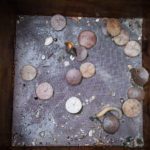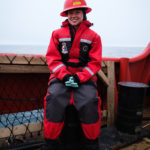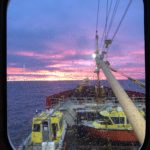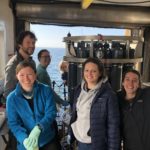Observing Ecological Shifts in a Warming Arctic
Karen Frey | Associate Professor of Geography | Graduate School of Geography
The Pacific sector of the Arctic Ocean is experiencing major reductions in sea ice and increases in seawater temperatures. One of the key uncertainties in this region is how the marine ecosystem will respond to seasonal shifts in the timing of spring sea ice retreat and/or delays in fall sea ice formation. Climate change is already causing shifts in the type and abundance of species living in these marine ecosystems, with many species migrating northward as climate continues to warm. These changes have profoundly impacted species higher up in the food chain, including seabirds and marine mammals such as walruses, ice-associated seals, whales, and polar bears. Several “hotspot” sites across the region have been identified as particularly important for biological activity and are now known as Distributed Biological Observatory (DBO) sites. I have been funded by the National Science Foundation since 2013 to undertake research related to understanding the impacts of climate change on these DBO sites. Each year since 2013, my students and I have traveled up to the Bering and Chukchi seas on the Canadian Coast Guard Ship (CCGS) Sir Wilfrid Laurier to undertake field sampling in each of the DBO sites. We use our collected data to continue building a time series documenting change throughout the region in order to better understand the impacts of climate warming on these marine ecosystems.
This year in July 2019, I traveled to the Arctic with undergraduate student Sophie Spiliotopoulos (’20, Geography/French) and Geography Ph.D. students Luisa Young and Clare Gaffey to continue building this understanding of the profound impacts of climate change on the marine ecosystems of the Bering and Chukchi seas surrounding Alaska.
The following are some of their reflections and field notes on the experience.
[toggle title=”Clare Gaffey | Ph.D. student | Geography“]
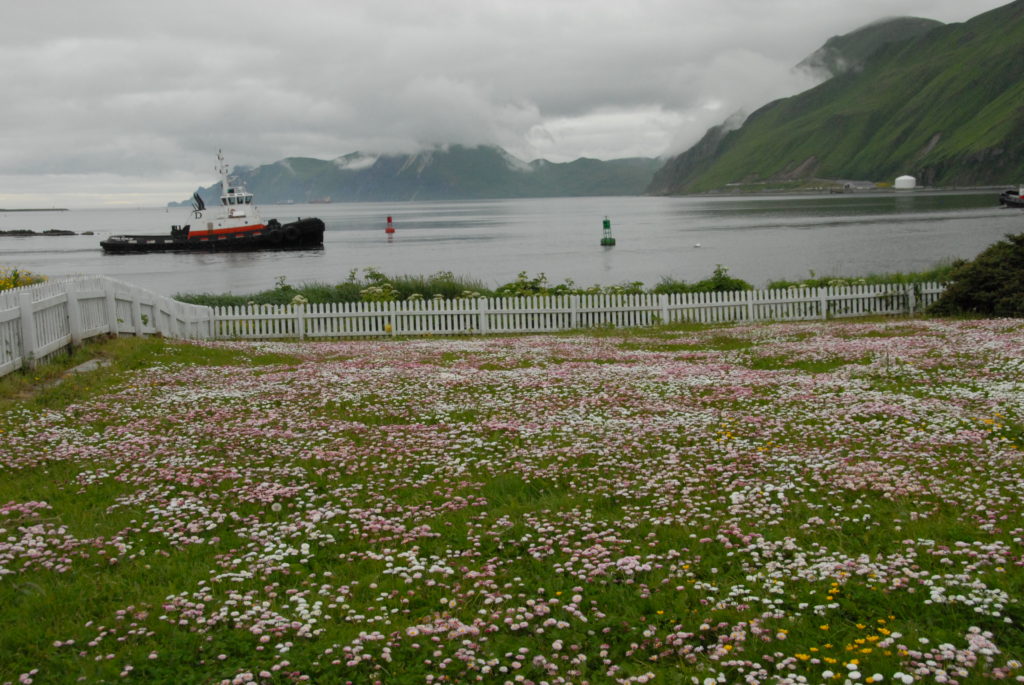
Photo Credit: Shea Wyatt
We started the trip in Dutch Harbor, a port nested within the Aleutian Islands. The almost tree-less landscape and the impressive population of bald eagles constantly reminded us that we were far from home. The Sir Wilfrid Laurier (SWL) picked us up from this dock and after 10 days delivered us to the northern tip of Alaska, Utqiagvik (formerly Barrow.)
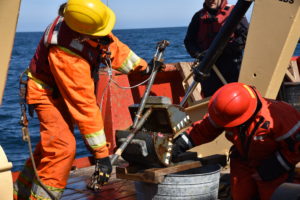
Photo Credit: Shea Wyatt
On the ship were several science groups collecting information on various characteristics of the DBO sites. I worked with the University of Maryland Center Chesapeake Biological Laboratory group who were primarily interested in benthic organisms and properties of ocean sediment including cutting-edge bio-markers that may be useful in reconstructing sea ice cover. At each station a Van Veen grab (pictured) was sent to the ocean bottom to collect samples. Once aboard, my task was to rinse off and sift the mud to collect the various organisms that live on the ocean floor. The most interesting catch this season was a baby octopus, who enjoyed a tour of the ship before being released back to the water. This work is both fascinating and essential as changing conditions in the Arctic are expected to have huge consequences for life at every trophic level. Die-offs of whale and bird species are already being observed off of the Alaskan coast and ocean temperatures were much warmer than previous cruises so continued research in this area is critical.
- Photo Credit: Shea Wyatt
- Photo Credit: Karen Frey
- Photo Credit: Jenny Stern
- Photo Credit: Shea Wyatt
[/toggle]
[toggle title=”Sophie Spiliotopoulos | B.A. ’20 | Geography and French“]
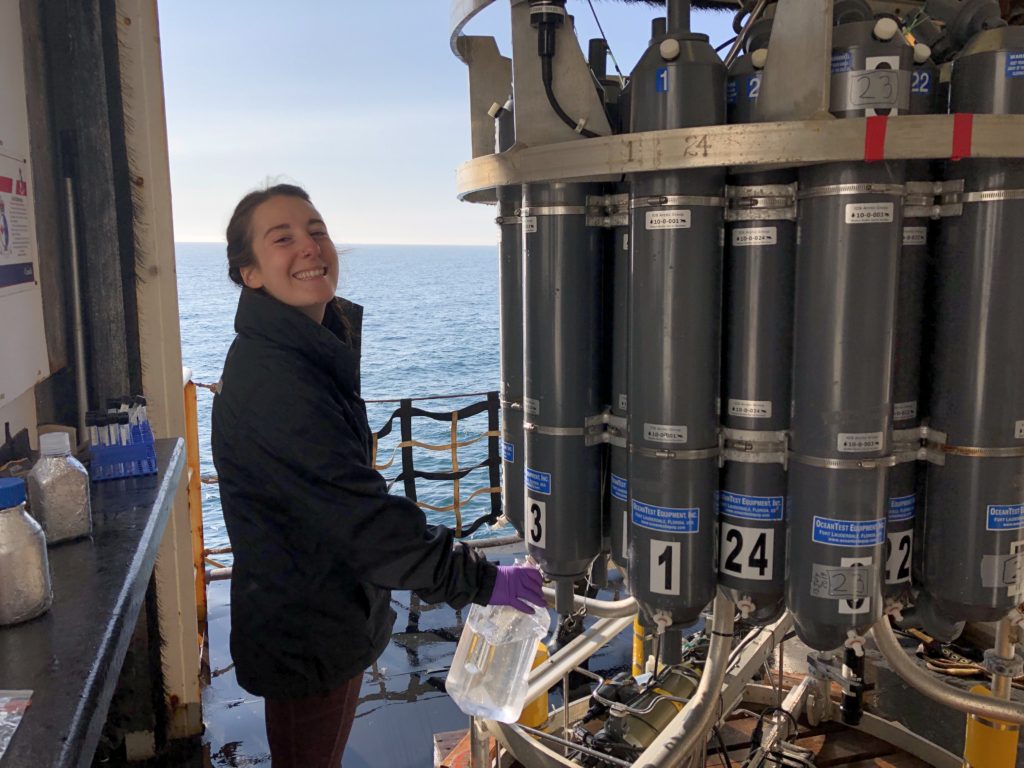
Photo Credit: Sophie Spiliotopoulos
Oceanographic research is often done in big groups, as renting an icebreaker can become quite pricey if you don’t split the bill. We work fast and we work together to make the best of our ten days of science. As for my part of the science, I collected seawater samples and filtered them through extremely fine filters. This filtering process could take anywhere between 30 minutes to more than two hours depending on how much ‘stuff’ is in the water column. After the first eight hours or so of work, you become a well-oiled machine. By the end of the cruise, I knew every in and out of the homemade filtering rig.
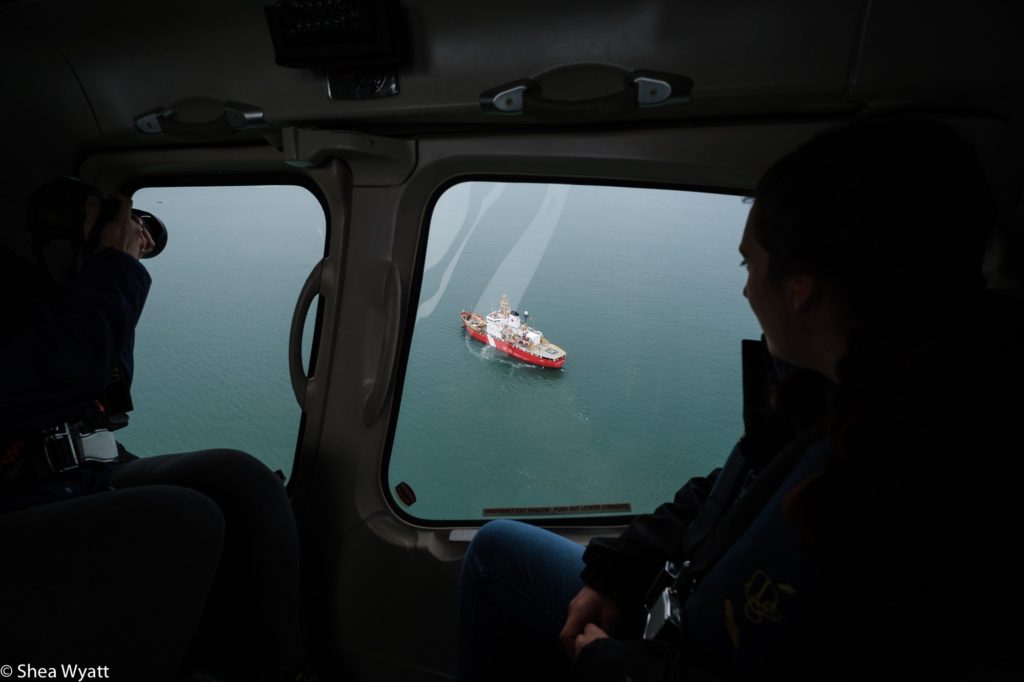
Photo Credit: Shea Wyatt
When I first began learning about the Arctic and its role in the changing climate, I had no idea that three years later I would be conducting the fieldwork that is the basis for our continued understanding on the topic. Many research projects stem from these Pacific Arctic cruises through the Distributed Biological Observatory (DBO) sties. My senior honors thesis will take advantage of the seven years of cholorphyll-a and suspended particulate matter data from these cruises and compare it to changes in sea ice concentration over the same area and time series.
One of the things that really drew me to this research was the interconnectedness of Arctic system science. Changing sea ice concentrations can have effects on primary productivity, which can have even wider effects on flora and fauna. We can follow these relationships all the way to subsistence hunters in Alaska or commercial shipping routes. Even more, changes in the Arctic will and already do have major impacts across the globe. Three years ago, what truly drew me to this work was the rapid rate of change in the region, but also the lasting impacts it will have on the entire world.
[/toggle]
[toggle title=”Luisa Young | Ph.D. Student | Geography“]
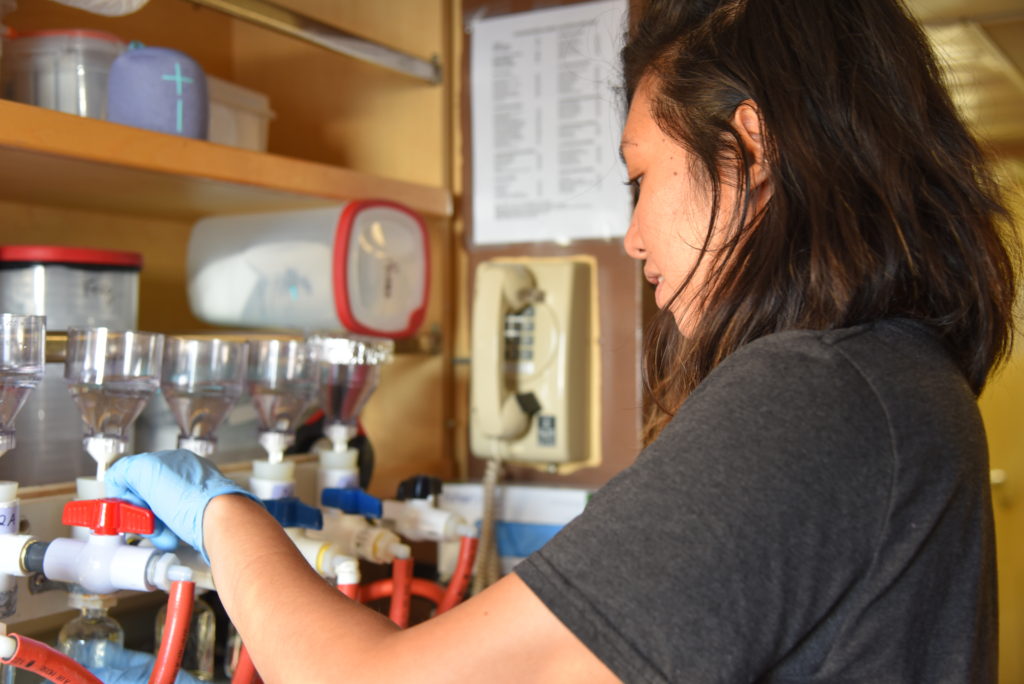
Photo Credit: Karen Frey
What happens in the Arctic does not stay in the Arctic. The declining sea ice and record-breaking warming events in the region can trigger fundamental changes both locally and globally. My research focuses on how these changes are occurring in the region over time. Using both satellite imagery and in-situ data I analyze dynamics of sea ice and melt pond coverage, community structure of phytoplankton and how these rapid changes in the Arctic impact extreme weather events in other areas of the world. While the scale of looking at these changes are huge (from the microscopic to larger scale atmospheric processes), it shows the far-reaching and pronounced effects of Arctic climate change.
This summer was my second trip aboard the CCGS Sir Wilfrid Laurier. I worked mostly in the wet lab where I collected sea water samples to measure for chromophoric dissolved organic carbon (CDOM). A subset of the samples was shipped to Oregon State University (OSU) as part of my Sussman grant to analyze phytoplankton species using an Imaging FlowCytobot (IFCB).
I always find the field work to be such an “eye opening” and humbling experience to be able to be there, in a region that is drastically changing in our time; not some distant or projected future, but here and now! While the hours are long (somedays we are on 32 hours of no sleep) the experience is absolutely rewarding. You are able to engage with other scientists and learn about the work they do as well as with the crew who are just as interested and take part in the data collecting. Those engaging interactions and discussions, whether it’s at the CTD room collecting sea water samples or the galley at lunch time, is always a highlight of the fieldwork. It’s that shared experience and community (on top of the work that is being done) that is so enriching.
What drew me to this work? Things seem to be coming full circle and perhaps it was my internal compass that led me back to this. I am from Fiji, a small island in the South Pacific where the ocean is an integral part of life and identity. While my undergrad was in Natural Resources and Environmental Management with a focus on water resources, I continue my Masters mostly focused on terrestrial ecosystems. Through my PhD here at Clark I’ve been able to expand onto marine ecosystems and in a sense return to waitui (saltwater in Fijian).
- Photo Credit: Luisa Young
- Photo Credit: Luisa Young
- Photo Credit: Sophie Spiliotopoulos
[/toggle]
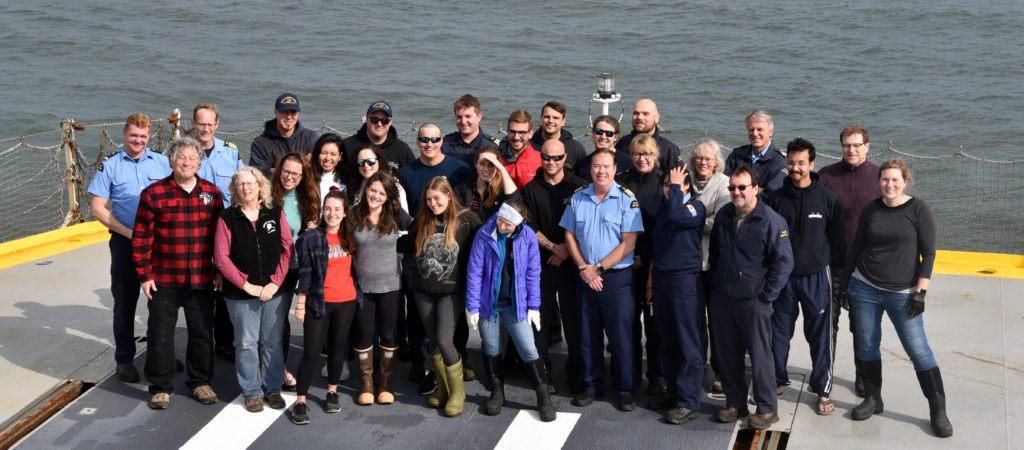
Photo Credit: Shea Wyatt
Learn more about Karen Frey’s work with the Polar Science Research Laboratory on their website, or by following them on Instagram.

